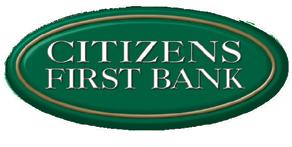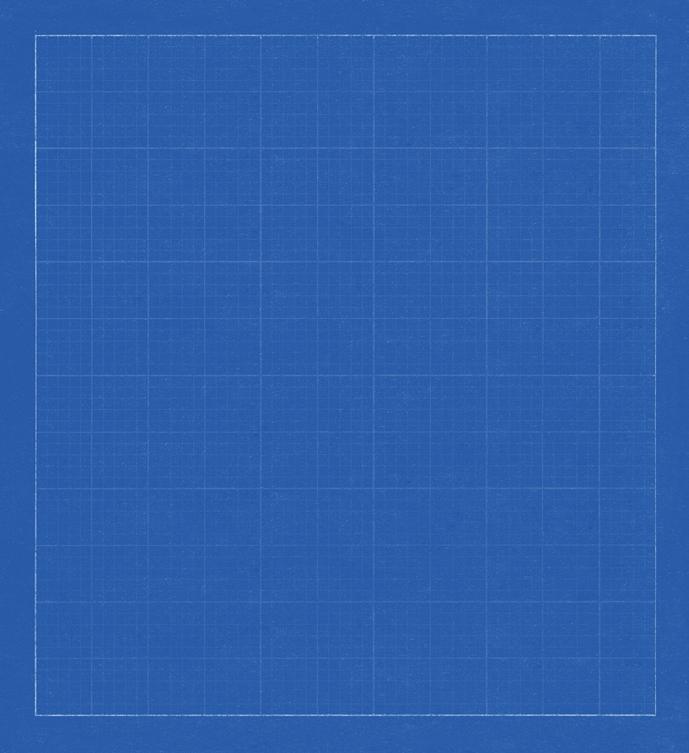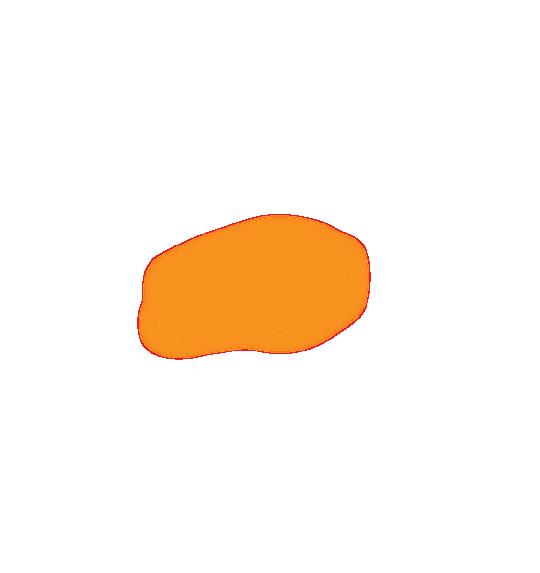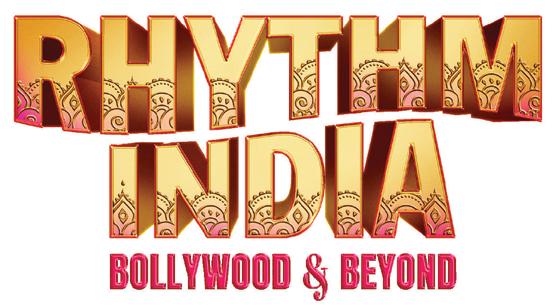FIRE GEORGIA OF






Much like the building’s namesake, my grandmother, Sharon L. Morse, we love all varieties of the performing arts here. It is in her memory that I, along with my amazing team of artists and arts administrators, strive to bring many different types of the highest quality entertainment here to The Sharon.
Since opening in 2015, we have strived to establish your trust, that a show at The Sharon is a show worth seeing. Perhaps you find yourself here today to see a concert of one of your favorite musicians, or to take in the national tour of a Broadway show. Either way, we encourage you to consider trying out a new show that perhaps you haven’t heard of before, knowing that it has been intentionally curated by our team.
We welcome you to The Sharon: a place for you to see an old favorite, but also a place to discover your new favorite. I sincerely hope you enjoy the show today, and I look forward to seeing you here again soon!
See You at The Sharon, W
hitney Morse Artistic Director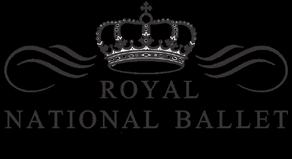
Gela Potskhvishvili – Co-Artistic Director and Chief Choreographer of the Royal National Ballet. Choreographer and Creator of all the dances, music and scenography of the “Fire of Georgia” program. Knight of the Order of Honor, Member of the National Academy of Georgia, the Best Dancer of Georgia of 2000.
Maia Kiknadze – Co-Artistic Director and Choreographer of the Royal National Ballet. Member of the National Academy of Georgia.
Light Designer:
Gurami Gardavadze
Sound Designer:
Giorgi Ozbetelashvili
Prima Dancers:
Maia Kiknadze
Zviadi Bagaturia
Soloists:
Mariam Komakhidze * Nino Chekurashvili * Ana Gogberashvili
Giorgi melikishvili * Shalva Elizbarashvili * Giorgi TevdoraSvili
Guladi Shavidze * Iasha Sheklashvili * Goga Khmaladze * Tengiz Turmanidze
Dancers:
Ketevan Chikhladze * Mariam Kharazishvili * Mariam DalaliSvili * Mariam
GikaSvili * Monika Bigvava * Akaky Kvitatiani * Gocha Gagoshidze * Shalva
Aphkhadze * Irakli Gakharia * Gocha Gagoshidze * Vazha Tchelidze * Gurami
Jabidze * Giga Lomitashvili * Mishiko Burjanadze * Tornike Kereselidze
Tamaz Odishvili
Tour Manager
Roman Shyshkin
Exclusive Booking & Production: World Touring, LLC / Leonid Fleishaker, Producer
Tel: 631-838-5658 * Email: info@worldtouring.net
Georgian dance is a celebration of life and of Georgia’s rich and diverse culture. Each dance portrays the characteristics of the region in which it originated. The mountain dances, such as Khevsuruli or Mtiuluri, are different from valley or lowland dances — Acharuli and Davluri. The costumes are different for every dance and resemble the clothing of the past in different regions of Georgia.
The dances perfectly capture the natural gracefulness and beauty of Georgian women and the courage, honor and respectfulness of Georgian men. The male dancers perform spectacular leaps and turns, incredible spins and can also boast a highly original technique for, unlike any other dancers in the world; they dance on their toes without the aid of “block” shoes. The female dancers “glide” like swans.
Georgian folk dances impress with their brightness, incredible fire, sumptuous costumes and the interweaving of history with art. They give incredibly great pleasure to both the audience and the dancers themselves. No one has remained indifferent after such a spectacle! Today we offer you to get acquainted with the most famous Georgian folk dances and learn a little about their history:
The exact date of the origin of Georgian national dances is not known. However, it is supposed that the Georgian dancing folk were mentioned for the first time before our era.
During many years in different parts of the country, unique dancing movements were appearing which have passed from generation to generation. And you will note that the dances of mountainous region inhabitants are characterized by sharp and rapid movements while the dance movements of plain inhabitants are smooth. Each Georgian national dance requires special costumes which resemble the clothes of inhabitants of different regions.
Below we’d like to tell you about the most popular Georgian dances:
Georgian dances are divided into solo, pair and group. Each dancer has to subordinate to the requirements of a common plan and its expression in the dance. At the same time the performers do not lose their individuality, since several dances demand competition between partners in strength,agility, elevation and bold movements.
The role of female dancers is an interesting one. It has a grace and charm of its own, comparable with classical ballet, where every emotion and feeling has its own
traditional movement. They are tender and calm; they do small steps and give the impression of slipping.
The male dancers can also boast a highly original technique for, unlike any other dancers in the world; they dance on their toes and without the aid of “block” shoes. Unbelievable exhibition of virile energy - spectacular leaps and turns, incredible spins - performed with a speed and precision the like of which can hardly be imagined. They are the only men in the world who dance on their toes.
Ballet is one of the key elements to Georgian dance and each dancer is encouraged to go through training, as it gives them the flexibility and elegance that the audience perceives and enjoys during the show.
1. Colchian Suite where two dances of Western Georgia are united ... These are Dance Partsa and Dance Adjaruli.
Partsa - this dance originates from a region of Guria and is characterized by its fast pace, rhythm, festive mood, and colorfulness. As people know, people from Guria are very fast in everything, let that be dancing, talking or whatever. So, this dance is a fast dance, too, of course. During this dance, the dancer is like flying in the sky. The dancers perform such movements, that you can’t even imagine. They even “build” towers by themselves and, well, this is a dance worth seeing, in short. It’s an excellent combination of movements that amaze the spectators.
Acharuli - Acharuli also originates from the region of Achara. And that’s where it gets its name, too. The dancers wear colourful costumes and the dance has a playful and entertaining mood itself. The dancers do some beautiful movements and it’s filled with joyand that’s why the audience loves this dance so much. The dance is characterized with graceful, soft, and playful flirtation between the males and females. Unlike Kartuli, the relationship between men and women in this dance is more informal and lighthearted. It’s a happy dance, if you ask me.
Samaia: the dance Samaia means a dance of a three, and it was originally performed by three women. However, the dance now includes more than three persons and sometimes it’s performed by 9 women, and they for three small circles. The dance represents Queen Tamar of Georgia. Well, she is mentioned as the Queen of Georgia, but in fact, she was the King of the United Kingdom of Georgia in the 12-th and 13-th centuries, and so she is considered as a king. She was the first and, so far, the only woman king in the history of Georgia. The
trinity idea in the dance represents King Tamar as a young princess, a wise mother and the powerful king. This is a very gracious dance and the women perform the movements very softly and beautifully. They are supposed to be divine just like the Queen Tamar was.
3. Dance “Sadarbazo – davluri” and “Kartuli” There are two dances, Dance “Davluri” also called “Sadarbazo” and dance “Kartuli”
Davluri is a nobles’ dance. It portrays the city aristocracy. The dance kind of resembles Kartuli dance, but the “relationship” between the couples is less formal. Generally Davluri is performed by many couples, they move slowly and softly and they form rows and they go on circles and then split, and then gather together again. It’s a wonderful dance. And I’m sure you all have seen those movies, where the nobles are dancing in large rooms during Balls or something. So, this dance is like that. It’s like there’s a Royal feast or something and the nobles are dancing there.
Kartuli: when we hear the name of the dance, it reminds us of a wedding, because usually it’s performed by the bride and groom at their wedding. It’s a very romantic and a very delicate dance, if you ask me. This dance is the most ancient of all the romantic Georgian dances that we know. I love that dance. And if the dancers are very good, it’s so splendid, that you’ll never get bored with watching. So, as you have already guessed, the dance is performed by a couple. The woman’s hands should move slowly and softly and her movements should be divine and full of gracefulness, and as for the man, he should be full of dignity and show respect and love to the woman. “It shows that even in love, men uphold their respect and manners by not touching the woman and maintaining a certain distance from her”. There are those small details, that make this dance even more gracious, for example, the man is constantly looking in the eyes of the woman and it’s like he doesn’t care about any other women in the world, while her eyes are always downcast, I mean, she isn’t looking up or looking at the man, and she’s kind of showing her shyness.
The woman should do this three-step movements and she should do these without spectators noticing these movements. So, she should move like a swan on a lake. She should glide. And the man does all these movements called “Gasma”, which are pretty hard if you take into account that he should be motionless at all times and just his feet and legs should move. And move very quickly! So, I don’t know if you get all that until you see the dance itself, but what I can say and everyone will agree with me, is that this dance is a very hard one to dance very well. It’s considered as one of the most difficult ones. The dance developed from a theatrical “show” or something like that from the 11-th or 12-th centuries, it was called “Sakhioba”. It was a dance with dialogues, also called “Satrpialo”, “Sadarbazo”, etc.
The dance is made of five parts, but sometimes it’s just performed in four parts.
Khorumi: It’s a dance about war and how Georgian ancestors fought in battles, as they had lots of wars and battles to fight in. Khorumi originates from the region of Achara and Guria _ Adjara and Guria are cultivated in the Black Sea in western Georgia, that is located on the southwestern part of Georgia and has beautiful seaside places, where everyone loves going in summers. About the dance. Personally, what I love about the dance is the exactness of movements and lines that dancers achieve. Now, in the beginning, a few men come out on the stage and they are performing those men _ the spies, who were usually sent to search the territories nearby and find out information about the enemy and stuff like that. So they come out and do moves like they are watching the territories. Then they call the others _ the army. And about 30 or 40 men come out in a line with one man leading them, and their movements are the same in the same rhythm and motion. And they have these costumes _ Gray combat uniform and this process are very beautiful with all these clothing and stuff. This just raises fascination in the spectators. The dance incorporates the searching, battle and the celebration of victory of the army. The celebration process is really amazing, too. The dancers show the bravery and courage that soldiers had during battles. This is a Great War dance that everyone should see and be proud of.
5. Mountain people variations – Dance “ATABE” (Atabe is a village in Phshav-Khevsureti)
Atabe dance is performed by only men and portrays the toughness and courage of the mountain people. Dance “Atabe” describes the dance scene of men gathered from Kazbegi, Khevsureti, Mtiuleti, Pshavi, Tusheti… In this dance is united the temperament and culture of the men living in the mountains. It’s in the mountains of Caucasus; hence, the dance describes mountain men in the cold environment and how they are stiff and tough.
Khevsuruli - This energetic mountain dance conveys love, courage, and respect for women, toughness, competition and skill. This is an amazing place, in the mountains of Georgia, in Caucasus. The people are great there and their special clothing have made them even greater, as their clothes differ from others and are very beautiful and the thing that they are handmade just makes you appreciate these people even more. This dance represents love, bravery, courage, competition, beauty, etc.
The dance starts out with a flirting couple. Then, another young man appears, also seeking the hand of the woman. Then the fighting starts between the two men, then other men appear, too, _ the supporters of each man and then the dancers perform a fight between them and the fight stops temporarily when the woman drops her veil between the two man fighting. Traditionally, when a woman drops her head veil all the fighting stops. But then, when the woman leaves the scene, the fighting continues and it continues even more vigorously. Men attack each other with swords and perform very cool movements just like in Khanjluri or Parikaoba or something. Sometimes one man has to fight against three or four other men, etc. Then, the woman comes in and, once again, she stops the fighting with her veil. But, as you have probably guessed, the story doesn’t end there and it’s up to the audience’s imagination what will happen next.
Swordplay dance is from Northeastern part of Khevsureti and pretty much resembles Khevsuruli. This is a dance of warriors, and there is a girl involved, of course. The girl enters looking for her beloved, while he is fighting against others and the girl drops her veil between them and the fighting stops, but when she leaves, they continue fighting (of course! ).
Old Tbilisi suite where three dances are united:
1. Kharachokheli; Kharachokheli was a city craftsman, who worked very hard, wore mainly black chokha _ the national men’s wear in Georgia, but he carried out this carefree life and loved wine and women and feasts. So the dance describes hislife pretty well.
2. Mukhambazi: Dance Mukhambazi is a dance of a woman living a bohemian life, who is attacked by city craftsman.
3. Kinto: So, there were Kintos in Tbilisi _ those were people, and were merchants. They had these black silk clothes on them with silver belts on their waists, where they had this red piece of cloth. Their trousers were baggy and they wore some kind of square hats and they usually had their goods put on their heads and so they walked in the streets of Tbilisi like that. When a customer chose some goods to buy, the Kino would take the goods, wrap it in that red cloth he had in his belt and just weigh them like that. The Kintos were cunning, clever and very sociable. There are pictures of them on the river Mtkvari and gathered together on a feast, etc. There are even paintings of Niko Pirosmani_ a famous Georgian painter _ where Kintos have a feast and they have that table filled with Mtsvadi
and Shoti and wine, etc. So, the dance itself is very amusing and people love to perform it. It represents how arrogant these Kintos were and always looked down on other people, while, in fact, they were just merchants.
4. Jeirani: this is a dance of a hunting scene and is performed by a woman dancer; Jeyran is a dance of hunters who hunt for jeyran… As you know, before the 19th century, the animal Jeyran, which looks like a roe deer, was widespread in Georgia. At the same time, hunting for jeyran was widespread in Georgia… The dance conveys the grief of the wounded Jeeran, who begs the hunters not to kill him. Usually the role of jeiran is played by women and the hunters are men. Eventually, the hunters will not kill Jeyran, who is very beautiful and play with it…
5. Khonga: or Invitation Dance _ this is Ossetian wedding dance, men dance on tiptoes, which is very difficult. Khonga is performed by a three man and three woman dancers. There is contrast of costumes in the dance, in the dance, a colorful costume of a boy with long sleeves is used, and a woman in a white suit, also with long sleeves the softness of movements, the strictness of line formations, and this all makes the dance very beautiful. As y0u know the dancers’ costumes have very long sleeves and the length of the costume names reflects the economic status of the family. And the dancers’ headwear is very high.
6. Dance of Trick Riders: This is the dance of Georgian riders As you know, Georgians all over the Caucasus were distinguished by the manner of a special fighting horse, The dance is about a real Georgian trick riders, and that is why the dance is called Trick of riders - in Georgian called “Mojiriteebi”. The costume is a short fit for riding a horse; the costume is a short fit for riding a horse with a black leather belt around the waist… Specific tricks are used in the dance… This is a great dance, which won’t leave you indifferent about it. This is a dance created by Gela Potskhishvili, There has never been such a dance before.
7. Imeretian Woman Dance: The Kingdom of Imereti was a Georgian monarchy established in 1455 by a member of the house of Bagrationi when the Kingdom of Georgia was dissolved into rival kingdoms. Before that time, Imereti was considered a separate kingdom within the Kingdom of Georgia, to which a cadet branch of the Bagrationi royal family held the crown. This started in 1260 after David VI revolted against Mongolian rule and fled to Abkhazia. This was the result of the Mongolian conquest of Georgia during the 13th century which decentralized and fragmented Georgia, forcing the relocation of governmental centres to the provinces. Imereti was conquered by Giorgi the Brilliant, who was subject to the Mongols, and united Imereti with the east Kingdom of Georgia. From 1455 onward, however, the kingdom became a constant battleground between Georgian, Persian and Turkish forces. Between 1555 and 1804 it was a vassal state of the Ottoman Empire. On 25 April 1804 Solomon II of Imereti
accepted Russian vassalage and in 1810 he was removed from the throne. During the time that Imereti was a vassal state, the Mingrelia, Abkhazia and Guria princedoms declared their independence from Imereti and established their own governments. In Persian - Azeri nomenclature the name of the region was changed to “baş açıq” which literally means “without a head scarf” Imereti women’s dance expresses the lyrical dance of princess women. Plastic is different, in the first part of the dance, the women ride on stage, and in the second part of the dance, they show graceful princely sculpture… This is a dance created by Gela Potskhishvili, There has never been such a dance before.
8. Mkhedruli; so, the word “Mkhedari” means cavalryman and, hence, the Mkhedruli is, therefore, a cavalryman’s dance. The dance begins in a raging tempo, becoming more and more fast and violent. The legs of the cavalryman imitate the fast movements of the horse, and the dancers’ body and arm movements impersonate the battle with enemy. And just like Khanjluri, the dancers need much practice to achieve the exactness of the movements and perform the dance perfectly. This dance is repeated at the request of the audience…
9. Final Dance: The final dance is a number consisting of the best dance moments of the whole performance, which ends with fireworks tricks… Now, after all these things that I’ve written here, I think you will consider watching some of the Georgian dances, because it will leave you fascinated by those movements and the elegance. I find it hard to believe, that someone seeing dancers dance real Georgian folk dances won’t get an unforgettable pleasure from it. And if you see dancing of Royal National Ballet of Georgia, this would just be perfect! They are really great at what they are doing and the movements are so exact and flawless, that it’s just worth seeing!
Program is subject to change Program notes by Artistic Director and Chief Ballet Master: Gela Potskhishvili
GELA POTSKHISHVILI co-Artistic Director of the The Royal National Ballet is one of the best dancers of our time. He was born in November 18, 1978.
In 1984, he began dancing at Youth Palace Dance Studio
“Merani”, headed by Lauz (Rezo) Chanishvili, Professor, Doctor of Arts, and graduated from the Dance Studio in 1989. Between the years of 1989 and 1995, he studied at the Choreographic Studio of the Georgian National Ballet Theater
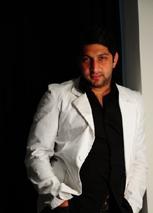
“Metekhi”. In 1995, he was enrolled at the Dance Theater “Metekhi” as an actor and dancer. It has been an ongoing relationship with the Theater ever since.
Gela Potskhishvili appeared on many stages around the world as a dancer, as well as a choreographer, and he’s been a recipient of many prestigious dance awards from around the world. In 2000, for his achievements in the Arts, Gela was acknowledged as the best dancer of the Year 2000 by the Art Council of Choreography in Georgia. A few years later, based on the President’s decision, Gela Potskhishvili was awarded with the Order of Honour for his contributions to the development of the Georgian Choreography and Dance.
In 2006, Gela Potskhishvili founded a Dance Academy as a professional dance school, where he’s been the Director and Artistic Director of the Academy. In 2008, Gela founded the Royal National Ballet of Georgia, the company he has taken around the world.
MAIA KIKNADZE Co-Artistic Director of the Royal National Ballet, was born in December 12, 1979.
In 1997, she successfully graduated from Vakhtang Chabukiani Choreographic Dance School, majoring in ballet. In 1997, she was enrolled in Zakaria Paliashvili Opera and Ballet Academic Theater of Georgia as a ballet actress, under the supervision of the choreographer Gogi Aleksidze. In 1998, she was enrolled in Dance Theater “Metekhi” as actor-dancer, of the “Philharmonics of Georgia” (Presently Art Union of the Culture and Monument Protection of Georgia).
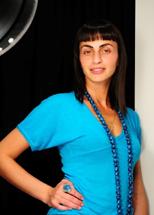
From 2000, she has been the leading sole dancer of the Dance Theater “Metekhi” and their choreographer. Maia Kiknadze has 17 years of experience of dancing on professional stage. During this period, she danced all leading parts in every dance performance of the Dance Theater “Metekhi”, mini plays and choreographic miniatures. In 2001, she graduated from State University of Culture of Tbilisi (presently Theater and Film University), majoring in classic, world people, Georgian dance teacher - choreographer. Maia Kiknadze participated in every performance of Dance Theater “Metekhi” in Georgia, as well as abroad. She traveled around the world together with the whole ensemble and proved her great professionalism and presented the image of Georgia as a real Georgian professional actress. Presently, she keeps her active dancing carrier, in parallel with teaching activities at Dance Academy, including classical and world people dance choreographer. Maia Kiknadze is the founder of Dance Academy and as well as art director in the direction of classic and feature dances.
From 2008, she became the co-Founder and a co-Artistic director of “Royal National Ballet” of Georgia. By the recent decision of the National Academy of Georgia, Maia Kiknadze was conferred the title of the honorable academician.











